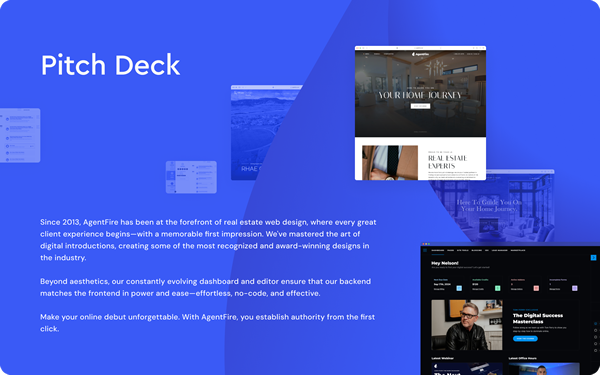Implementing client feedback is an affordable and effective way to enhance your real estate busieness by miles. This client feedback loop with show you how.
Branding & Design
Here’s the truth: client feedback is almost useless to agents if it’s not used in a circular system. First, getting client reviews is crucial. If we don’t know what we’re doing wrong, we won’t stop doing it. If we don’t know what we’re doing right, we won’t know to continue doing it. But it doesn’t end there.
For starters, reviews inform us of client demographics, client loyalty (how likely they are to share or promote you as a real estate agent), customer satisfaction (were they satisfied with your level of service), and client preference (suggestions and focus on what they prefer).
With the right feedback system in place, client feedback can be used consistently to inform future business strategies, shape online content, and improve relationships.
What is a Customer Feedback Loop?
A client (or customer) feedback loop is a strategy meant to continuously enhance and improve your business, starting with client suggestions.
Data gathered from your clients is used to develop new processes that enhance the long-term, overall success of your business. A great feedback loop keeps the client front and centre throughout each step of the process.
The stages of your client feedback loop should look something like this:
- Collect Feedback
- Acknowledge and respond
- Sort and analyze data
- Apply feedback and test
- Consult clients for opinions and results
- Reassess
Why Do You Need a Customer Feedback Strategy?
Let’s be honest: some of your ideas may seem awesome when deploying, but your lead numbers and clients reviews have the final word. Clients today have limitless avenues to offer critiques and you need a way of managing and absorbing these critiques in a way that benefits your business.
A high-quality feedback loop makes all the difference between customer fall-off and retention. With an idea of how the ‘loop’ works, you can consistently gather, understand, and integrate your users’ suggestions in order to enhance your offer. A data-driven look into client sentiment should inform your team of how to approach every interaction, marketing material, and deliverable with clients.

Where to Collect Customer Feedback
As a real estate agent, there are a few avenues your clients can use to leave you feedback.
Survey tools
A Google form or Survey monkey survey is an easy way to gather client feedback, however, it isn’t always the most natural-feeling or honest. You’ll need to be cognizant of leading questions and try your best to leave questions opened-ended in order to solicit the most honest answers. You’ll also have to inform clients that their reviews may be made public and used for other content in the future.
Google and Facebook Reviews
Google and Facebook reviews are quick and easy ways for your clients to leave you feedback on platforms that they are comfortable with. Additionally, clients are aware that both platforms are inherently public. These reviews can also improve your real estate business’ SEO by naturally using positive keywords in reviews that are associated with your business. Plus, they easily link back to your real estate website and other platforms.
In-person Conversations and over the Phone
For some clients, a natural one-on-one conversation is the easiest way to get their opinion. While you can’t repost or reuse these reviews easily, you can note them down and tie them into your plan for future improvement.
Use your client follow-ups or newsletter to gently nudge clients for feedback. You can add a link to your Google My Business page or close your emails with a request for feedback by email or on another platform.
Social Media
Considering the average adult spends over two hours on social media per day, connecting social media platforms are a great opportunity to find clients where they are. Create a post requesting that past or future clients leave a suggestion for how you can improve your service or direct them to your Google My Business page or Facebook page.
How to Get Feedback from your Real Estate Clients
Regardless of the medium you use, there are a few general rules that will help you get the most useful and rich client feedback possible.
- The best times to request client feedback is after providing real estate advice, after showing clients listings they love, or after closing on a property.
- Chatbots such as those on Facebook messenger can be set to manage feedback-oriented conversations
- Integrate the review request into your scripts. For example, close your thank you email with a request for clients to share their experience on your website.
- Remember to give a reason for your client to leave a review. For example, communicate that reviews help you grow your business and give you the feedback you need to provide the best possible service.
- Ideally, at some point along this journey, you will put together unique and individualized requests for client reviews. This is a magic opportunity to jog their memory about specific details that can make for rich and keyword- dense responses.
- Let clients know in advance, that they’ll receive a request for evaluation after closing.
- Data shows that shorter surveys perform better. In the case of a survey or guided response, ask fewer, frequent questions to improve your response rate. Long surveys sent at poor timing cause respondent fatigue.
- Ask for reviews no more than 3 times from the same client, on different occasions (ideally when calling to check in in regards to a different subject).
- Remember that reviews on platforms such as Google or Zillow will take some time to be moderated before appearing publicly.
- At times, offering an incentive can get the job done like a small gift basket, gift card, or flowers after a positive experience can make clients more enthusiastic about writing a review.

Respond
Regardless of whether a client review was positive or negative, it deserves a well-thought-out response. As a professional, it is imperative that you make each client feel acknowledged and valued.
Respond to positive reviews by thanking them for the review and expanding on points they’ve made. Close by offering future service and remind them that you are easily available whenever needed.
Negative reviews also warrant a polite response, however, you should also acknowledge their frustrations. Down the line, it may be possible to offer a service or conversation if they are willing to remove the negative review. For more tips on how to respond to negative reviews, check out this article.
Analyze the Data and Compare it Against the Current Strategy
Many platforms will automatically have analytics data available that can be useful to you (e.g. website activity, Google Forms, Instagram, etc.). Looking at analytics may help you to notice patterns in regard to your online service and marketing. For example, a broken link to your contact page can cause you to lose loads of leads a day.
Upon receiving detailed reviews regarding your work on the job, note which points come up repeatedly. If clients are regularly complaining about the same pain points, you know to target these quickly and urgently.
How do client reviews align with the business objectives and strategies that you currently have in place? Can you tweak your current strategies and neatly integrate some new recommendations? Is there technology available that can help you improve in the areas mentioned by clients?
This type of stream of questioning will help you flesh out the next steps to take.
Apply and Begin Testing Customer Feedback
Imagine for example, that clients found your contact page to be too disorganized or lacking information. After updating your contact page, track your website performance with Google Analytics to see if your bounce rate has decreased. This will tell you that clients are spending more time on the page and are, therefore, finding it to be more useful and engaging.
A similar formula of implementation and review should be followed for each of your client-inspired alterations.
Consult with Clients
The next step is to use feedback to further strengthen your client relationships and encourage more engagement.
For example, send a client an email to let them know of the influence and impact they’ve had on your work. This will make them feel heard and truly valued.
If a client appears invested and interested in sharing their opinion, continue the conversation by following up with more detailed questions based on their responses. This can further assist your team in providing exactly what your intended clients are looking for.
Share Feedback
After gaining the permission of your client, share testimonials in places where potential clients are sure to see them.
AgentFire clients use a variety of integrations to aggregate and neatly display their client testimonials from across the web. Your website is your online home base, so it’s key to put your best foot forward. Check out how The Oasis Group uses our Zillow integration.

Reviews on real estate marketplaces and search engines will pop up on their own after they have been approved by their respective platforms. You can then use quotes and images from these reviews to create social media content and other types of web content.
Adding a link to a reviews page (whether is be on your website, search engine, Facebook ect.) in your email signature is a subtle and easy way to gather more. Additionally, you can endorse your positive reviews as part of a CTA in your newsletter or blog.

Reassess
When all is done and put into action, you head back to the drawing board. As long as you have clients, you’ll have opinions about your work that can be asses and integrated.
Take a look at how your previously implemented strategies have drawn you closer to or away from your business objectives. Then, make necessary changes and continue to look for new pain points amongst new reviews.
Key Takeaways
Growing your real estate business is largely dependent on your client’s happiness. Luckily, today’s real estate clients aren’t shy about sharing their opinion.
In order to make the most out of your and your clients’ time, think about how you can implement reviews to create real change. After all, you can’t fix problems you don’t know you have, and you can’t fix problems without a strategy.
This feedback loop is the system every agent needs to keep their current clients coming back for more and recommending you to their contacts in order to continue growing your business.
If you want more in-depth articles, tactics, strategies, and advice – subscribe to our newsletter. And if you want to dominate your hyperlocal real estate market, check out AgentFire’s Web Designs, #1 rated for several years in a row.







